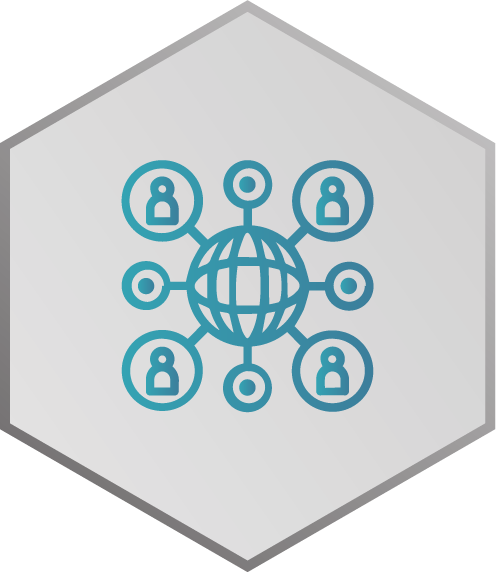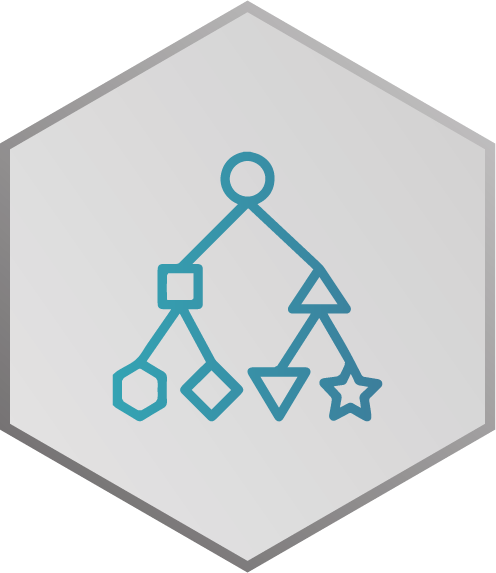14.4 Information and knowledge management systems#
14.4.1 Information management#
Statistical information is constantly sought after within an NSO and by its external users. With the ever-increasing amount of information, we receive in our daily lives, finding relevant information can be a time-consuming challenge. Information can be scattered across a multitude of disconnected systems, repositories, databases and data warehouses, and access to it can also be restricted. This often leads to the creation of ‘information silos’ that evolve, reflecting the way organizations are structured, in that different departments have different priorities, responsibilities and visions. This can lead to inefficiencies in communication and collaboration between business units, making it difficult to find and retrieve information. This in turn, contributes to duplication of information and inconsistencies, thereby reducing efficiency and productivity, as well as leading to frustration.
Fostering a culture of information sharing and the use of information management tools can improve the ways to find, retrieve and deliver information in order to facilitate better sharing of information and knowledge, thereby maximising the use of statistical data.
This can help in the identification of new trends and opportunities, improve the sharing of information with other agencies and help protect vital information. It brings together data, information, technology, information systems and business processes with the goal of providing information to users according to their needs.
14.4.2 Knowledge management#
Knowledge management concerns how collective information, knowledge and expertise are used in order to be more effective as an organization. It covers the management of data flow, the sharing of “know-how”, knowledge retention, collective information, knowledge and expertise. The creation of knowledge systems can help filter out what content is important to a user, encourage collaboration across boundaries and break down organizational silos and base organizational actions on knowledge, sharing experiences and learning from them, so that the wheel is not constantly reinvented. With the increasing demand for transparency and accountability from governments, knowledge management is a key component of a strategy to efficiently manage knowledge in a multi-stakeholder environment like an NSO.
Knowledge management systems refer to any kind of IT system that stores and retrieves knowledge, improves collaboration, locates knowledge sources, mines repositories for hidden knowledge, captures and uses knowledge, or in some other way enhances the knowledge management process.
To succeed, a knowledge management system requires both tools and a culture of collaboration. Technology is obviously important to implement a knowledge system, but the focus should be on people and processes rather than IT systems and on creating a culture of collaboration and knowledge sharing. Knowledge management systems are software that specialise in the way information is collected, stored and accessed, combined with an open and collaborative approach.
Knowledge management requires the expertise to organize information and knowledge in a systematic way, and when properly applied, it can reduce the time needed to find information, prevents the loss of knowledge, and allow people to work faster in a more efficient and agile manner. Simply put, knowledge management can make an NSO more effective. An NSO can benefit from a knowledge management system using collective information and knowledge irrespective of its capacity level. Such a system can range from basic process documentation to more sophisticated systems using knowledge management software and work practices.
14.4.3 Information and knowledge management tools#
There are a number of tools and best practices for implementing information and knowledge management systems. These include:

Content Management Systems manage the creation and modification of digital content. They typically support multiple users in a collaborative environment. They support the separation of content and presentation and are widely used for organizational content management and web content management. Main functions include web-based publishing, format management, history editing and version control, indexing, search, and retrieval.

Groupware is collaborative software which can be used to exchange knowledge and expertise. It is designed to help people involved in a common task to achieve their goals. Groupware refers to programs that help people work together collectively while located remotely from each other.

Search engines are information retrieval tools that connect knowledge seekers with experts and answers.

Knowledge portals are web-based applications that provide a single point of access to organizational knowledge, integrating knowledge repositories, expert directories, collaboration tools, and other knowledge-intensive applications.

Communities of practice are networks of individuals working with a common, shared purpose grouped together to facilitate knowledge building, idea creation and information exchange.

Enterprise social media focuses on the use of online social networks or social relations among people who share business interests and/or activities.

Mentoring and knowledge transfer is the practice of retaining and transferring knowledge within an organization by mentoring and late-career knowledge transfer to develop talent, skills and careers.

Post-mortems, lessons learnt is a systematic way of recording experiences lessons learnt that can be subsequently made findable throughout the organization with the use of taxonomies.

Transfer of best practices is a systematic way of recording best practices that can be subsequently made findable throughout the organization with the use of taxonomies.

Classification of content using taxonomies within a content management system. Taxonomy can refer both to the hierarchical structure into which content is authored as well as the metadata elements and vocabularies created for tagging content.
Examples of Knowledge Management Software (🔗).
